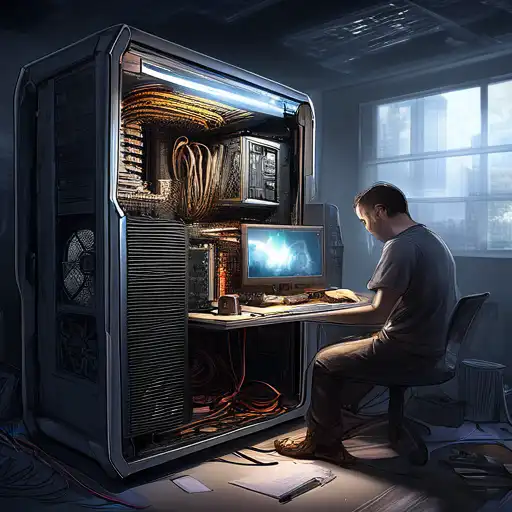Introduction to PC Building
Embarking on the journey of building your own PC can be both exhilarating and daunting. This guide is designed to demystify the process, providing you with a step-by-step approach to assembling your dream machine. Whether you're a gamer, a creative professional, or just a tech enthusiast, building your own PC offers unparalleled satisfaction and customization options.
Why Build Your Own PC?
Building your own PC allows you to tailor every component to your specific needs, often resulting in better performance and value than pre-built options. Plus, it's a fantastic way to learn about the inner workings of computers.
Essential Components for Your Build
Before you start, you'll need to gather all the necessary components. Here's a list of the core parts required for any PC build:
- Processor (CPU)
- Motherboard
- Memory (RAM)
- Storage (SSD/HDD)
- Graphics Card (GPU)
- Power Supply (PSU)
- Case
- Cooling System
Choosing the Right Parts
Selecting compatible components is crucial. Research each part to ensure they meet your performance needs and work well together. Websites like PCPartPicker can help you check compatibility and find the best deals.
Step-by-Step Assembly Guide
Now, let's walk through the assembly process:
- Prepare your workspace with adequate lighting and a non-static surface.
- Install the CPU onto the motherboard carefully, aligning the pins correctly.
- Attach the CPU cooler according to the manufacturer's instructions.
- Insert the RAM into the designated slots on the motherboard.
- Mount the motherboard inside the case, securing it with screws.
- Install the power supply, ensuring all cables are accessible for connecting to components.
- Add your storage devices, connecting them to the motherboard and power supply.
- If you're using a dedicated GPU, insert it into the appropriate slot on the motherboard.
- Connect all necessary power cables from the PSU to the components.
- Finally, manage your cables to ensure good airflow and a clean setup.
Installing the Operating System
With the hardware assembled, the next step is to install an operating system (OS). Whether you choose Windows, Linux, or another OS, ensure you have a bootable USB drive or DVD ready for installation.
Tips for First-Time Builders
Building a PC is a learning experience. Here are some tips to make the process smoother:
- Take your time and don't rush the assembly.
- Refer to the manuals that come with your components for specific instructions.
- Test your system outside the case first (a 'breadboard' test) to ensure all components work.
- Keep a magnetic screwdriver handy to avoid losing screws inside the case.
Where to Find Help
If you encounter issues, forums like Tom's Hardware and Reddit's r/buildapc are invaluable resources for troubleshooting and advice.
Conclusion
Building your own PC is a rewarding project that enhances your understanding of technology while providing a system tailored to your needs. With this guide, you're well on your way to creating a powerful and personalized computer. Happy building!
